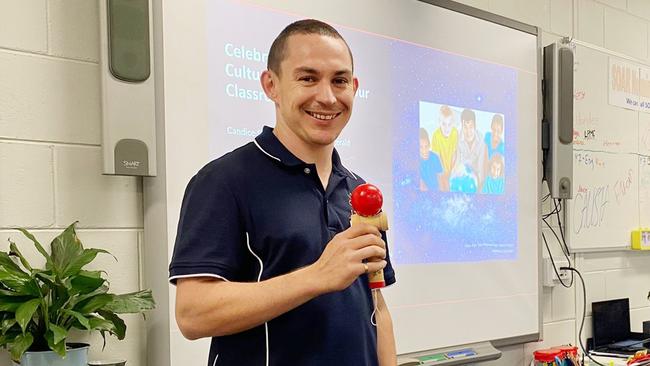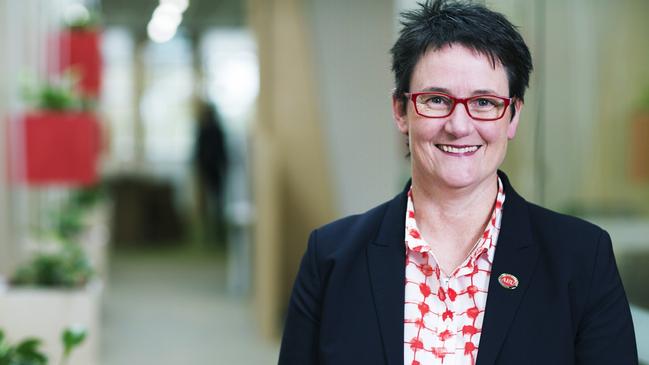Mass exodus will leave Australian classrooms short 4000 teachers in 2025 as data reveals worst hit states
Schools have failed to fill thousands of teaching roles in time for term one amid a mass exodus of educators and growing incidents of violence. See how your state fares.
SA News
Don't miss out on the headlines from SA News. Followed categories will be added to My News.
A mass exodus of teachers will leave Australian classrooms short of more than 4000 educators, leaders warn.
National teacher education union vice president Meredith Peace said schools would fail to fill thousands of public school teaching spots with the latest data showing New South Wales and Victoria have the highest number of vacancies.
NSW education department figures reveal almost 1500 teacher vacancies after 2050 teachers resigned in 2023, while a search showed more than 1000 teacher jobs advertised in Victoria during December last year.
Queensland filled 3839 jobs in 2023 but also had 2607 teachers leave the system, according to figures from its education department.
A spokesperson said 2024 “teacher vacancies (are) around two per cent” of its more than 56,000 teacher workforce, equating to more than 1000.
The Northern Territory is also struggling to keep teachers in the system, while South Australian and Tasmania are slowing the tide.
In the Territory, 516 teachers resigned in 2024 in a workforce of 1836.
These figures include NT News cadet journalist Darcy Fitzgerald who saw numerous examples of teachers being verbally abused and assaulted.

He claimed constant “violence and abuse is compounded by the stressful environment of an understaffed and underfunded school system”.
“It was common for teachers to be physically assaulted (myself included) and receive no apology from the families or the students,” Mr Fitzgerald said.
How big is Australia’s teacher shortage?
The national teacher shortage is expected to surge to 4100 in 2025, according to federal Education Department predictions, with fewer people enrolling in teaching degrees and about 20 per cent of graduates leaving the profession within the first three years.
The AEU’s 2024 State of Our Schools survey report collated survey results from 15,219 teachers, principals and education support staff across Australia, showing 83 per cent of schools had experienced teachers shortages in 2024, almost triple the rate of 28 per cent in 2015.
At the end of term one last year, 48 per cent of public schools in Australia still had vacant teaching positions, resulting in 86 per cent of teachers in Australia having to teach split or merged classes.
Violence scares off teachers, SA Secondary Principals Association says
South Australian Secondary Principals’​ Association chief executive Jayne Heath said safety was paramount in attracting people to the profession and keep them there.
Ms Heath, who has 46 years of experience in public schools, lays bare the dangers educators face on school grounds.
“At a time when we are facing a national teacher shortage, it is essential that our school-based staff and educators feel safe and protected in their work,” she said.
“Principals and educators are in the job because they care deeply about the children and young people in their care, so when their safety is threatened, they will step in to protect the student.”
Ms Health tells of an incident where staff had to stop a threatening father from getting into a school, call in police and muster students inside to keep them safe.
“A parent arrived at a school to ‘sort out’ a student who had called their child ‘fat’,” she said.
“Staff intercepted him on his way into the yard at a break time.
“In front of staff and students he yelled threats like ‘I’ll f---ing break her legs’, ‘I know where she lives’, ‘Ill f---ing take on her grandfather too’ and ‘I’ll f---ing cut her tongue out’.
At another school, Ms Heath tells of a principal left “physically shaking” in fear of being attacked by a parent who twice entered the grounds “looking for a particular staff member”.
“A student had admitted to vandalising the school facilities, however the students’ parent didn’t believe this to be the case,” she said.
“It is not only staff who are threatened.
“When an aggressive adult is on a school site, students and staff can be threatened and in fact in danger of harm.”
AEU teacher jobs data call as private schools poach public staff
The public system’s loss, is the private system’s gain, Ms Peace warned, claiming teachers were being actively poached by better-off schools.
The AEU leader called on governments to openly reveal staffing data across the nation and to properly fund public schools facing an exodus of teachers.
Ms Peace said Australia’s piecemeal approach to keeping teacher vacancy and resignation records made planning for projected teacher shortages difficult and hid the true picture of a struggling system from parents and the community.
“We have one of the most inequitable schooling systems in the world and the teacher shortages are exacerbating that inequity,” she said.
“Anecdotally, where areas are experiencing significant teacher shortages there have been issues around poaching of staff from the non-government sector, we’ve seen that in Victoria.
“They can afford to pay people more, they are fully funded and public schools aren’t.”

More than a decade after the landmark Gonski Report called for a fairer system, private schools are fully funded but most public schools suffer a shortfall, according to Ms Peace.
Most only receive 20 per cent of funding from the federal government and 75 per cent from state governments, despite the Gonski Review Report outlining alarming trends in Australian students falling academic achievement – and a link between low levels of achievement and academic advantage.
One senior education source said there was evidence of teacher poaching also happening in SA, and Catholic schools routinely paid “three to four thousand dollars” more than a graduate’s public salary to secure younger teachers.
SA data showed vacancies dropped to 44 compared to 60 at the beginning of 2024 and 86 at the beginning of 2022.
The state’s Education Minister Blair Boyer said while the figure was heartening, it came off the back of measures like giving teaching students still finishing degrees special leave to teach, moving teachers from specialist areas and having principals helping in classrooms.
“But we’ve also lifted pay rates and tried to tackle workload by giving teachers one extra hour of non-teaching time a week for marking and planning,” Mr Boyer said, in a bid to attract more young people to the profession.
Tasmania also has reduced vacancies, in March 2023 it had 83 empty roles but by term four this year that had fallen to 35.
More Coverage
Originally published as Mass exodus will leave Australian classrooms short 4000 teachers in 2025 as data reveals worst hit states






